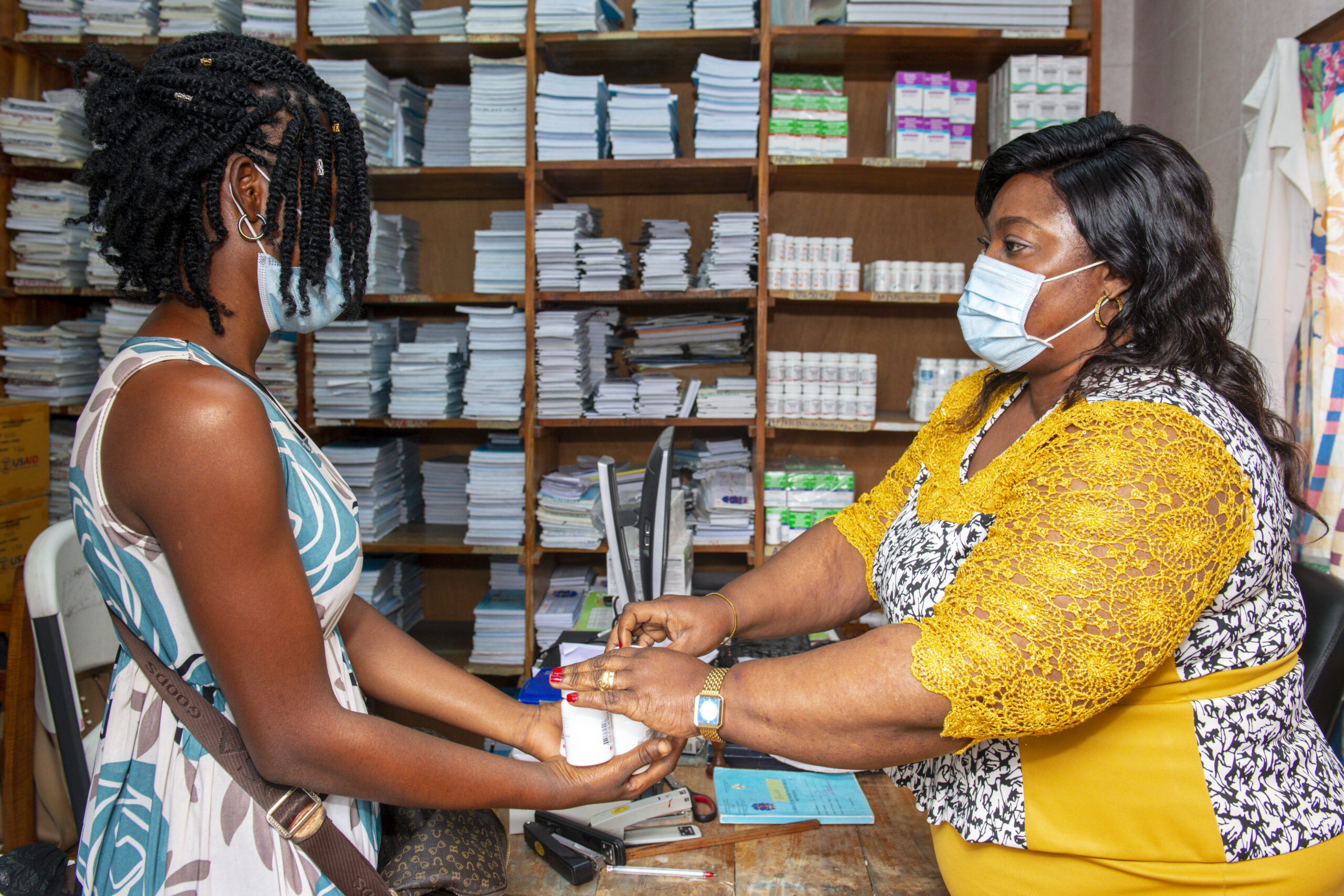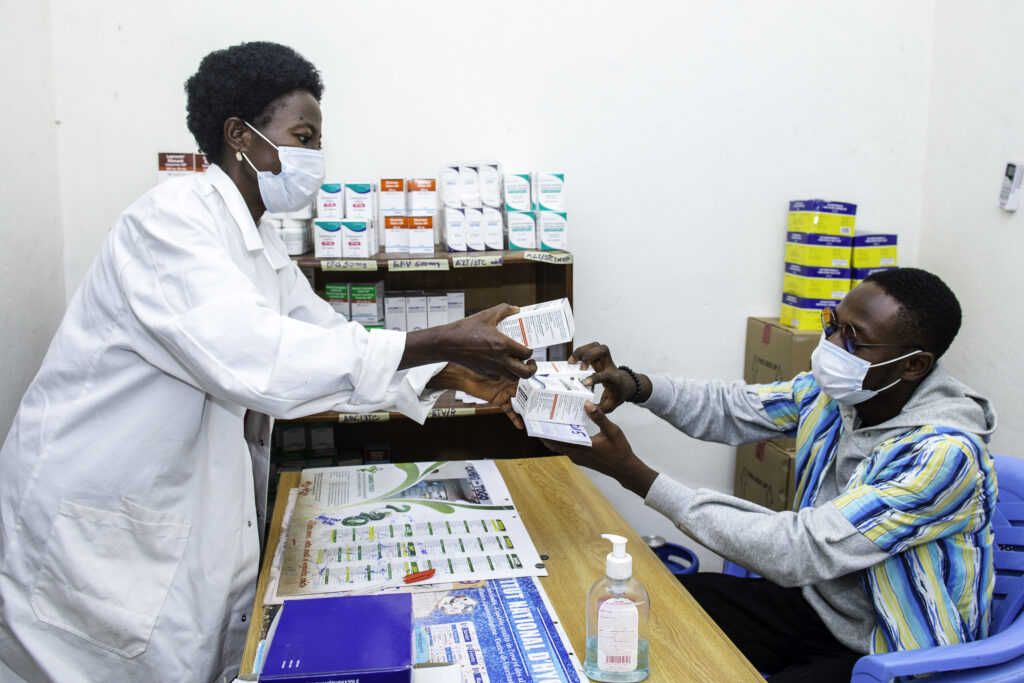#EAWA Team
Angela (pseudonym) is a pioneer of the first Back to Care campaign in Burkina Faso for people living with HIV (PLHIV).
Angela’s life was at risk because she felt she had no choice but to interrupt her antiretroviral therapy (ART). Her health care worker found and re-engaged her in ART by giving the support she needed to overcome her difficulties during a focused campaign to bring people experiencing interruption in treatment (IIT) back to care.
The campaign, conducted during September–October 2020 in Burkina Faso, was implemented by the Ending AIDS in West Africa (#EAWA) project, led by FHI 360 with funding from the U.S. Agency for International Development (USAID) and the U.S. President’s Emergency Plan for AIDS Relief (PEPFAR). Through the campaign, 66.5% of 10,362 PLHIV clients listed as lost to follow-up (LTFU) in Burkina Faso were successfully brought back to care.
The COVID-19 pandemic caused Angela’s economic situation to worsen so much that she had to interrupt her HIV treatment. “I had money only for food so I could not use it for transport to fetch the ART medicines. The bus fare to the clinic is expensive so I had to interrupt my treatment,” she explained. “It is better to eat enough before taking the medication to avoid nausea or weakness. I was hoping my situation would improve.”
Fortunately, Angela got help quickly from her health care worker and the Back to Care campaign. She was identified as experiencing IIT during the campaign’s first step, which was a search for people like her to compile a list of ART clients who had missed appointments for refills. The names were drawn from #EAWA’s innovative E-tracker system, cross-checked with records of people initiated on ART, and supplemented with patient code, age, and sex. Clients who missed health care appointments for 28 days were classified as IIT. At that point, health care workers began making telephone calls and conducted home visits as needed.
Angela did not answer the telephone call because she was feeling despondent. After several attempts to reach her, the health care worker decided to go to her home to see why she had interrupted treatment and help her find a solution. Because of her precarity, it was decided that ART refills would be delivered to her home so she would not have to pay the bus fare to go to the health center. She was also informed about where she could get food aid to allow her to eat enough every day to better tolerate the medication. Angela felt cared for and soon the suppression of viral load made her feel better. So now, she is optimistic.
“My health care worker helped me understand that if I take ART regularly as prescribed, the HIV virus will be undetectable and therefore I cannot transmit it to a sexual partner. For me it means, I can have children, work, and enjoy life like anyone else,” she said happily. “Now I am sure that I will never stop my treatment again.”
Angela’s words about being undetectable=untransmittable (U=U) point to the vital importance of tracking individuals who have interrupted treatment and re-engaging them in the HIV care cascade. Besides financial constraints, people interrupt treatment because they may have moved to new homes more distant from their usual health care site, or they fear social stigma. Some are in denial about infection or believe in divine healing.
The Back to Care process began with a search to identify people who had interrupted treatment. To solve difficulties in finding IIT clients, implementation teams held regular meetings involving managers, medical and psychosocial services, care providers, and frontline health workers. They also evaluated results to improve services.
A main takeaway was that the campaign must be carefully designed and planned. The keys to success were motivating strong engagement of all stakeholders and care providers to achieve desired goals. Back to Care should become a continuing process because the essential start-up tools have been created and validated, and training is available on the necessary skill sets. Further advocacy is needed for more policymaker support and donor funding.
Photo Credit: #EAWA Team


